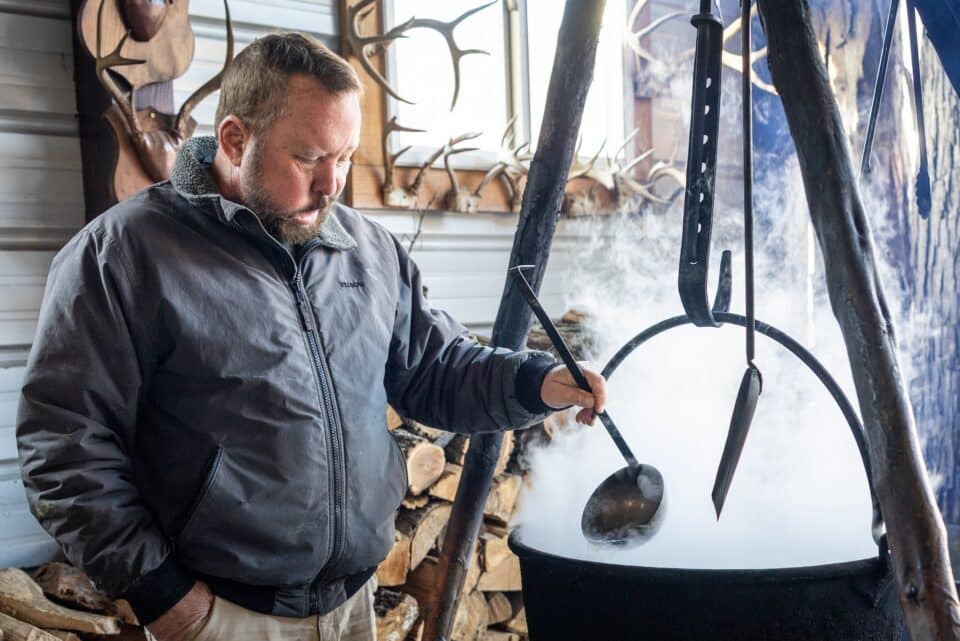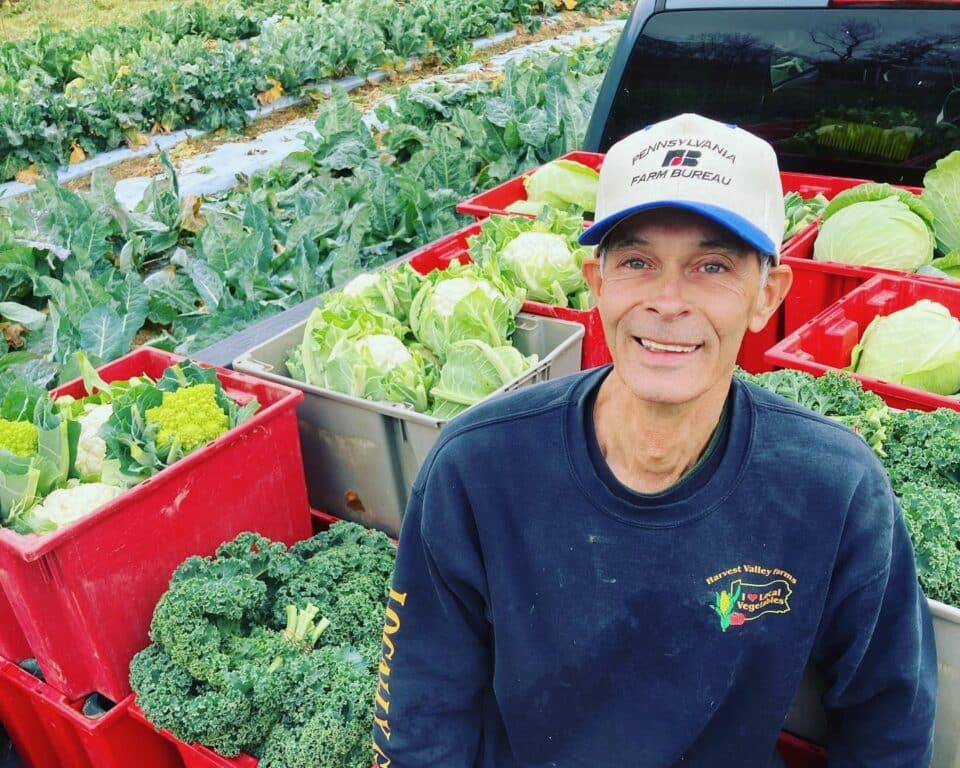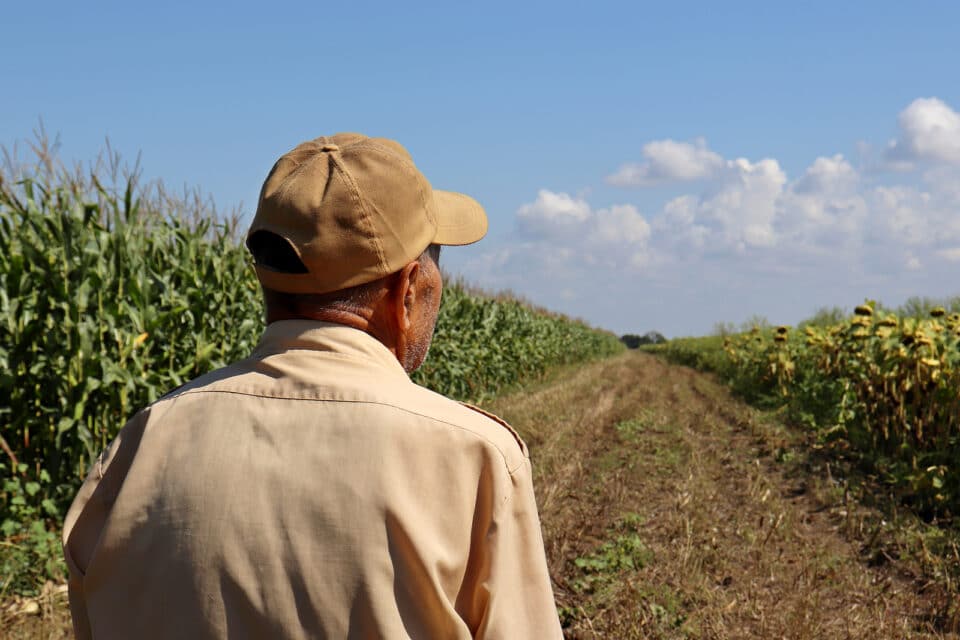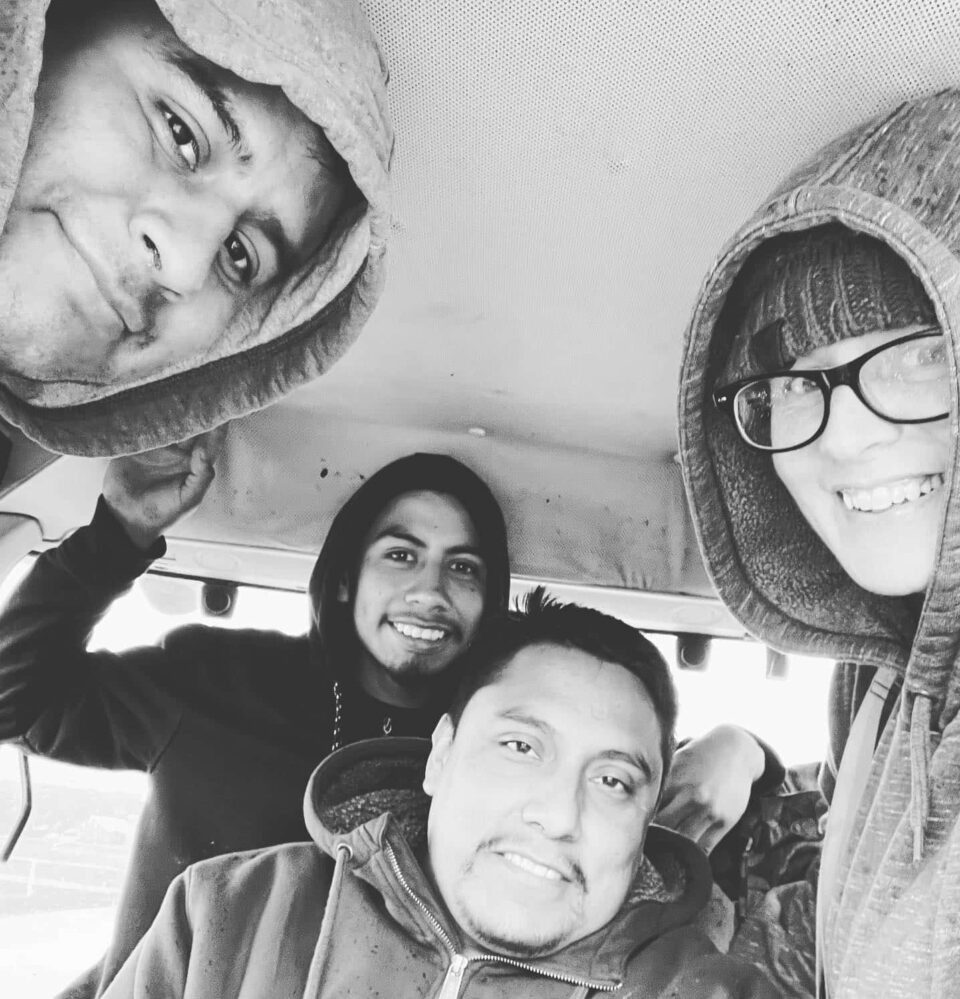When Adam Dusen and Sunghee Kim started Hundred Fruit Farm, they knew there weren’t going to approach it in the typical way. Instead of planting their 10-acre patch of land in Bucks County with quick-growing vegetables and other annuals, they dedicated most of the farm to fruit trees and berry bushes which wouldn’t start to reliably bear fruit for years. In lieu of setting up at farmers markets, they formed a Buyer’s Club, allowing a limited number of subscribers to come pick food at the farm and purchase CSA-style boxes of produce.
They also committed to use only regenerative farming practices; that meant no synthetic pesticides, chemical fertilizers, GMOs or antibiotics. Their farming method is called permaculture and it is based around the concepts of working with, rather than against nature, and approaching any area of land, ranging from a backyard to a large farm, as its own self-contained ecosystem. The “perma” in permaculture stands for “permanent,” as this agricultural philosophy is about long-term planning and thinking about multiple generations into the future.
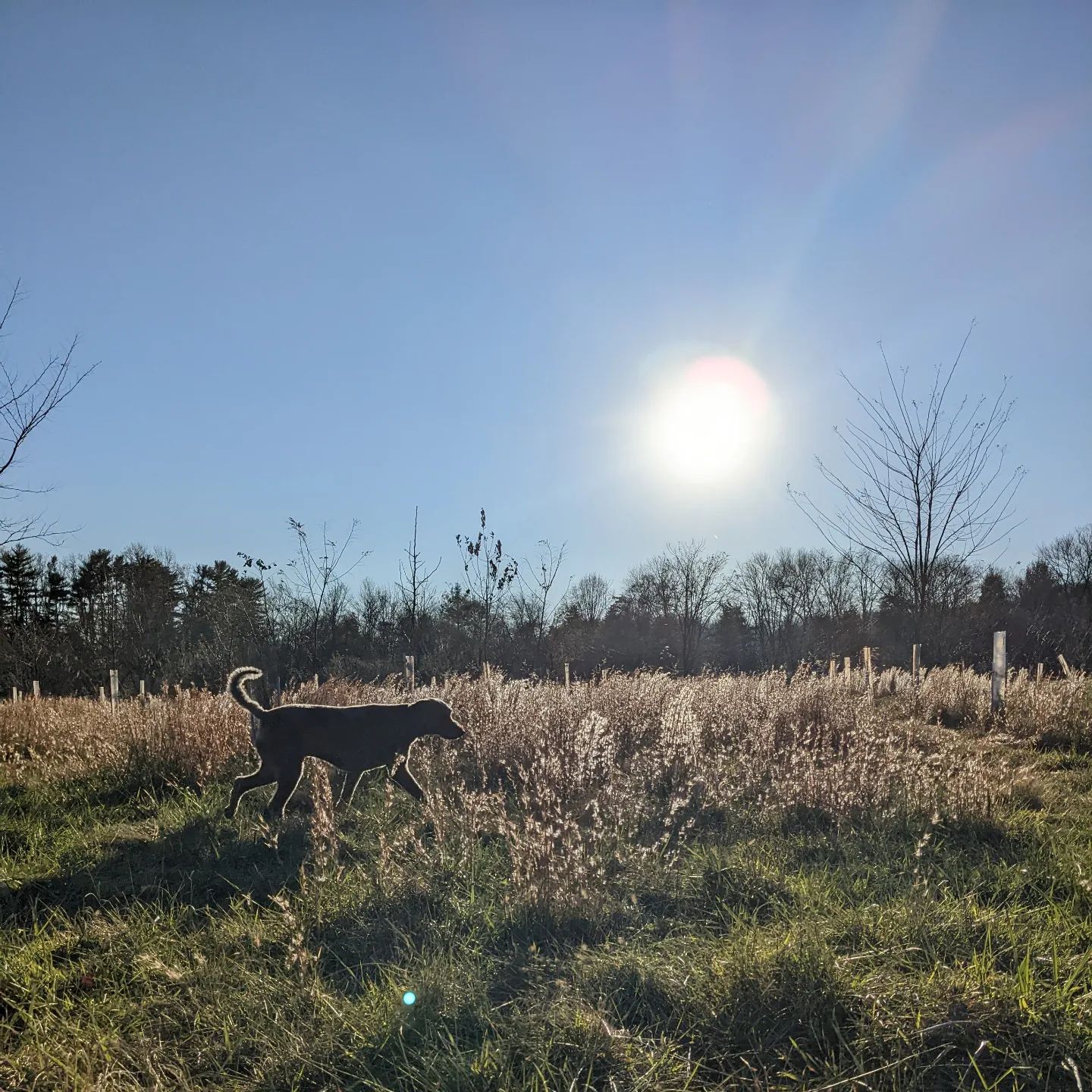
Hundred Fruit Farm is in New Hope, PA, a relatively suburban area in Bucks County. Dusen and Kim live there with Dusen’s parents, who helped them purchase the land in 2015. Dusen is a Bucks County native (he grew up in Doylestown), and Kim is from Seoul, South Korea, and together, they run daily operations on the farm and in the orchards, host events and workshops, run permaculture design courses and breed Babydoll Southdown lambs.
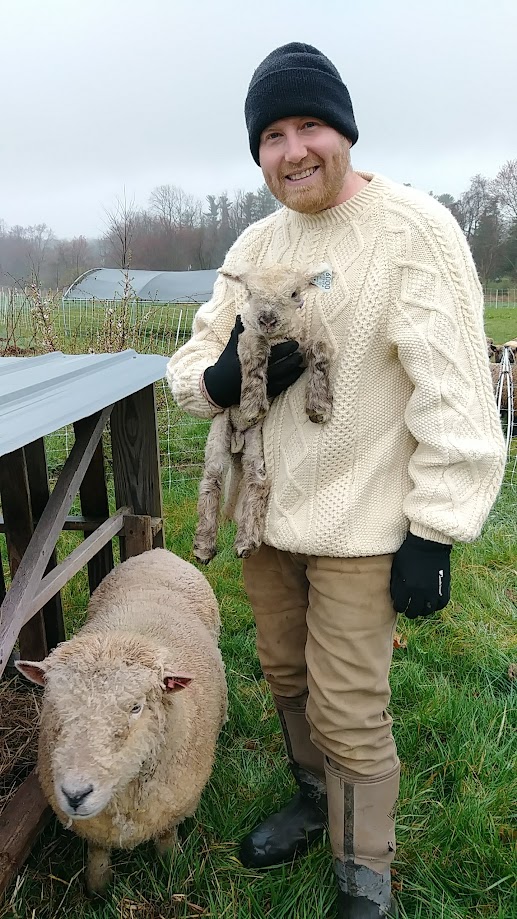
Dusen with a Babydoll Southdown lamb
Amidst this busy schedule, we were able to enjoy a chat with Dusen to learn more about Hundred Fruit Farm, as well as what permaculture is and how it influences their decision-making as farmers.
PA Eats: How did you become interested in farming?
Adam Dusen: I started WWOOFing in college back in 2006. I didn’t have a background in farming; I got a philosophy degree and then a Master’s in sustainable development. But I fell in love with agriculture, and returned to the farm, which was in Central PA, every year and learned a lot about organic farming. A few years later, I took a permaculture design course. I never actually ended up working in the field of sustainable development, but to me, permaculture is the intersection of food systems, ecology and our environment.
For my wife, Sunghee, farming is also a new thing because she grew up in the city. Her background is in animal behavior, but she’s gradually become more and more of a farmer, and 2023 was her first year being on the farm full-time.
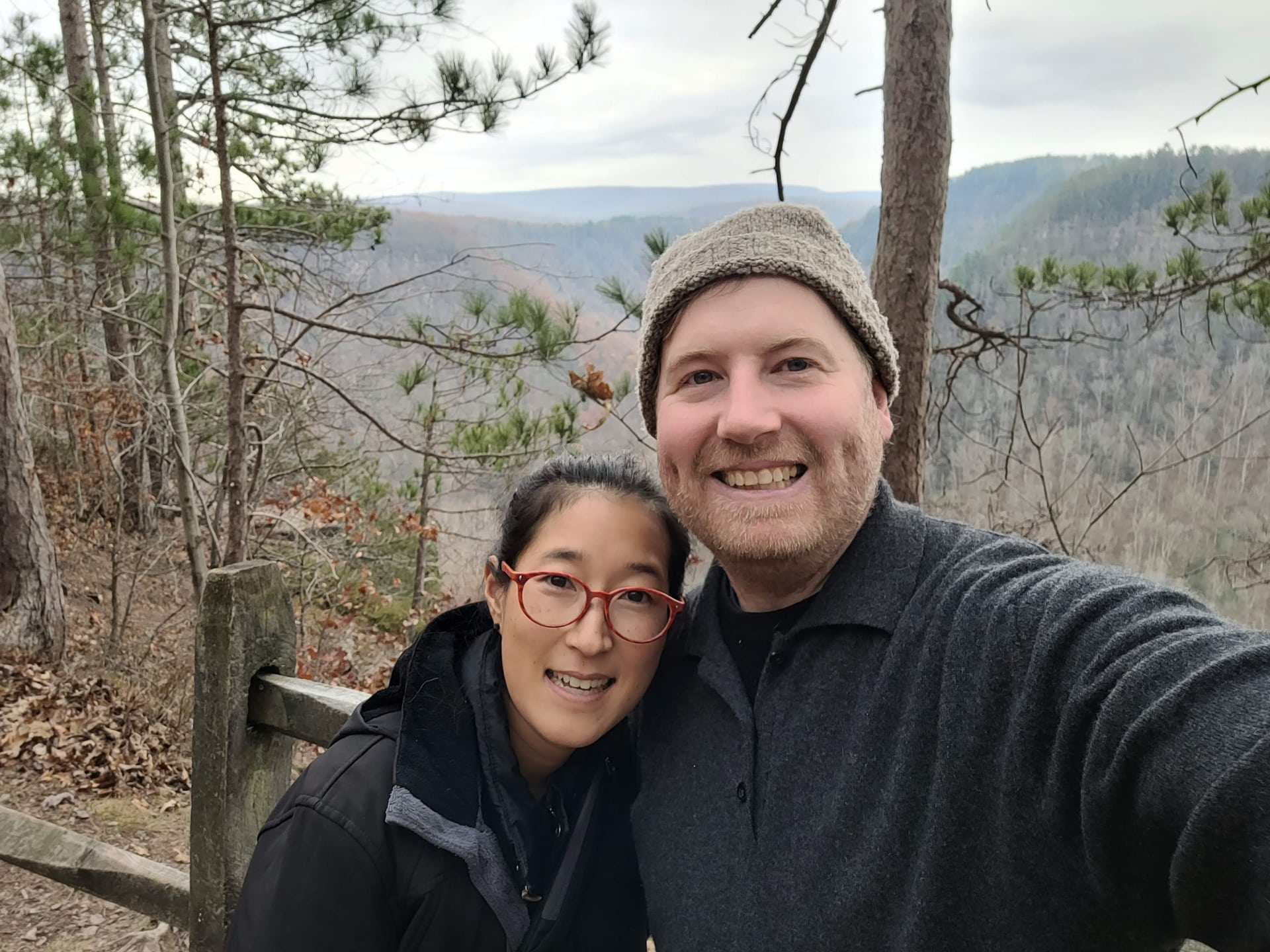
Sunghee Kim and Adam Dusen of Hundred Fruit Farm
What was the process like of finding land to start Hundred Fruit Farm?
Finding land is the biggest obstacle to young farmers anywhere, but especially in this area. The fact of the matter is it’s very difficult to find affordable land in Bucks County. It’s basically impossible, and a lot of farmers are forced to lease. Sunghee and I started this farm with my parents, who also live on the farm. They helped us get the land so they could retire here. Without our parents, we wouldn’t have been able to do this.
If you have to lease, that forces you to have a certain kind of farm, most likely growing vegetables. We’re very fortunate to grow these long-term crops, like fruit and nut trees, because we don’t have to worry about what happens when the lease runs out. If we were going to do it on our own there’s no way we could have stayed in Bucks County. We would’ve had to go somewhere more rural, or maybe even somewhere outside of the county.
Are there certain parameters or features you needed the land to have?
We were looking for something around 10 acres. A lot of parcels around here aren’t suited for farming, like too wooded or wet. So the challenge was finding land that was mostly open with decent drainage and no excessive trees. On the land we’re on now, there wasn’t really any agriculture infrastructure, which is something we were looking for, but the land itself was so great, with a gentle, south-facing slope and a pond. But we had to install a garage, water lines and a barn ourselves.
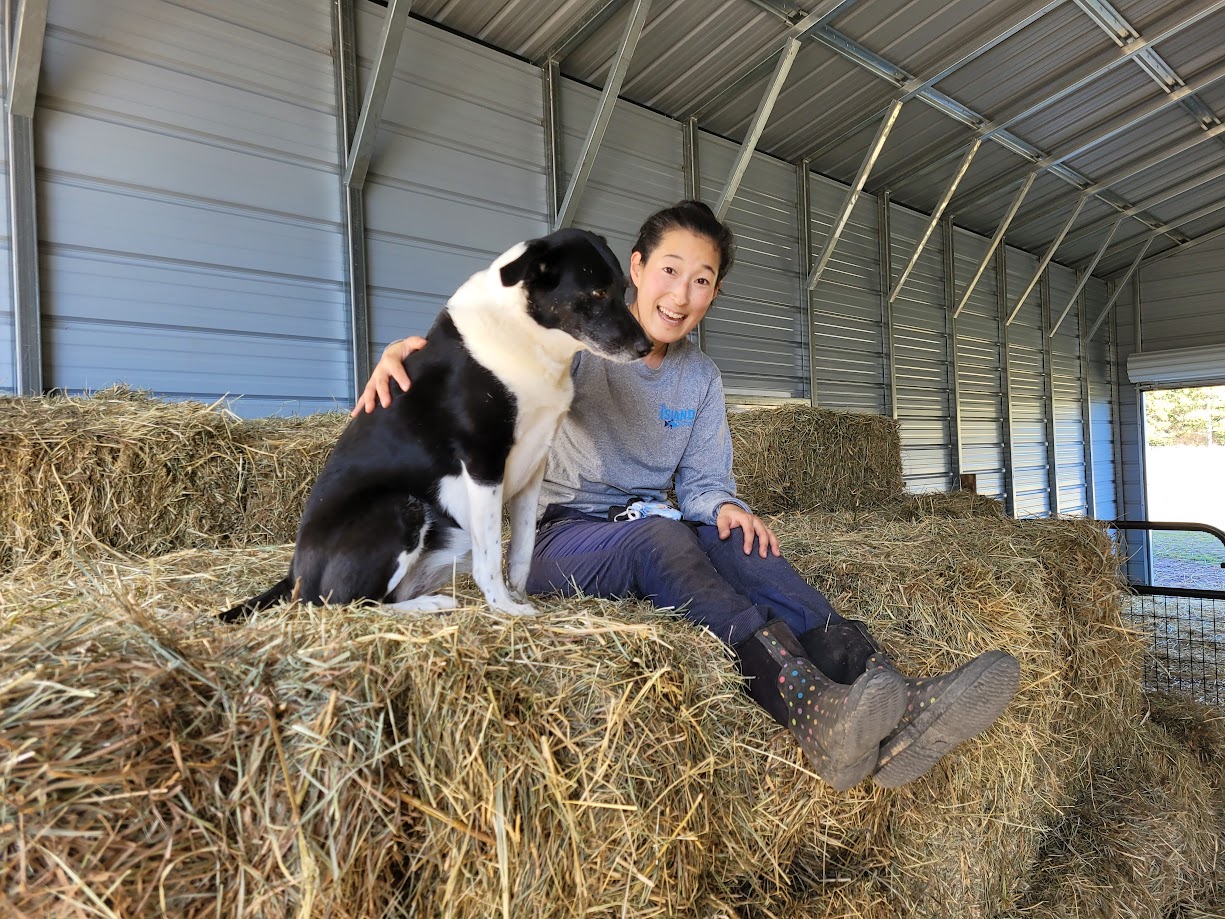
How did you begin to transform the land into a working farm?
We got the land in 2015, and the first thing we did was put up a deer fence, because we wanted to grow berry bushes and fruit trees, and some vegetables, and most of that would be impossible to do with the density of deer here. Then, 2016 was our first full year in the farm where we were really able to plan things out and get things in the ground. We’ve always had permaculture design as the foundation of what we’re doing, and we knew we wanted to do highly diversified, long-term crops. While all those things were developing we were growing vegetables, mushrooms and some of the quicker berries that only take a couple seasons. That’s basically all we could get income on in the early years, and we did some outside work, too. And now, 8 years later, we have a lot of perennial crops, a lot of our berries are doing so well. We’re even starting to get some chestnuts and grafted black walnuts going.
What was the learning curve like for brand-new farmers?
Well, I did have some experience. At the farm where I WWOOFed, it more or less morphed into an apprenticeship. I had two or three seasons there to get my feet wet. I also spent some time at a permaculture site in Thailand. That’s where I did my design course, and I spent about a year volunteering there, helping run the place. And the last real job I had was the Island School in the Bahamas, where there is a big permaculture farm on campus. I was a farmer and educator there for about a year and a half.
But there was still a learning curve. It was a breath of fresh air to be able to make my own decisions, but also that means everything’s on my shoulders. When something breaks, I’m the one who has to fix it. I also do design work, so I wear a lot of different hats. Learning how to run a small business was very new to me, and is the biggest thing in starting your own farm. I’m more into farming than the business side, but you have to learn how to do it.
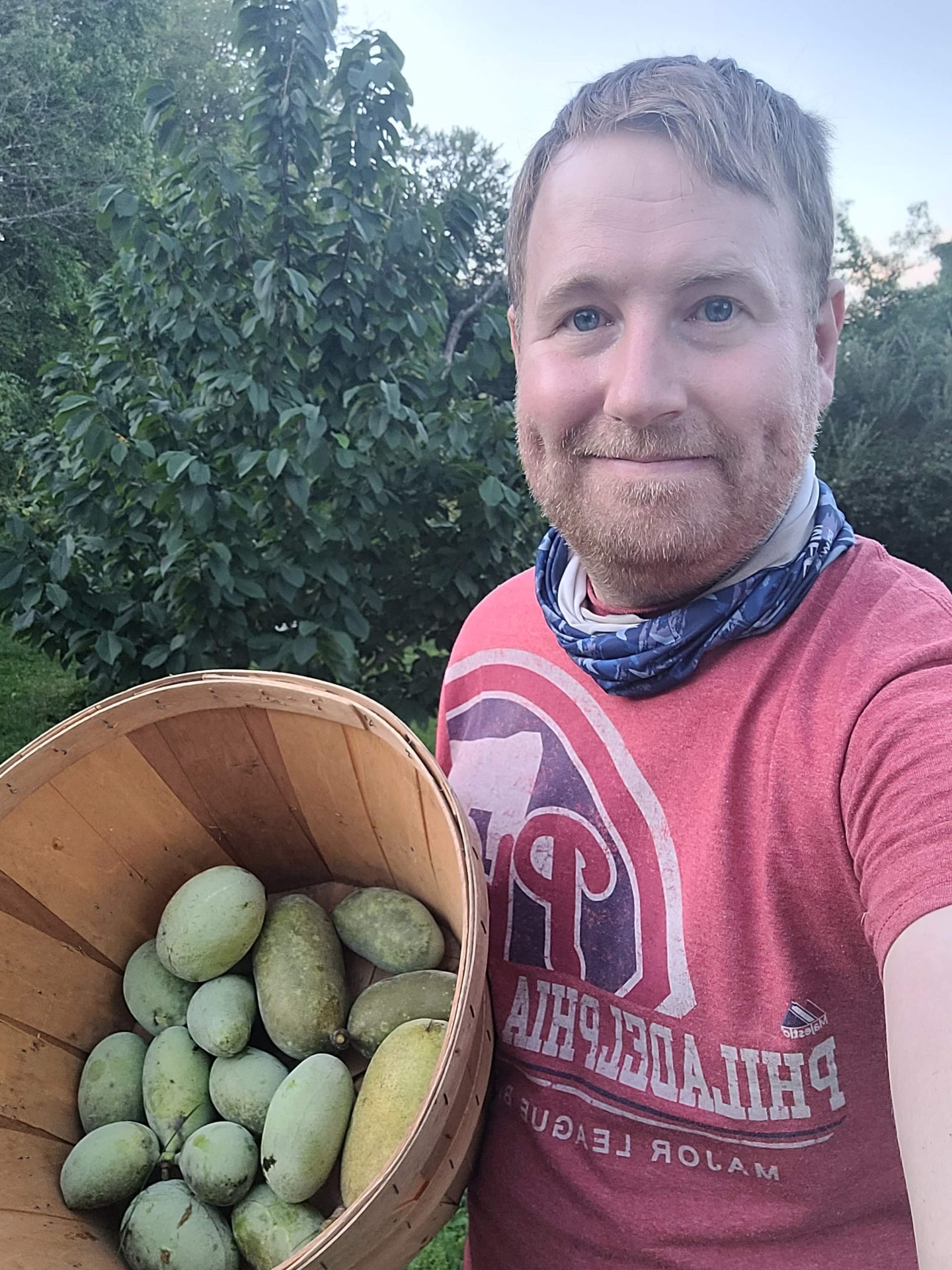
Can you explain more about what permaculture means as a philosophy, and how you apply that to farming?
Permaculture is all about mimicking natural ecosystems. It’s trying to create living systems and food systems for people that are holistic and integrated with the land around us and the ecosystems we want to be supporting. It’s integrating systems that are self-supporting. There aren’t any hard and fast rules for permaculture, but we do have three big ethics: care for the earth, care for the people, and return the surplus. Those underlie everything we do in permaculture.
How is this different than organic farming?
One major difference between permaculture and organic farms, is that organic farms might tend to really specialize in one thing, like maybe corn or soybeans. Even if they’re growing them organically, they’re primarily still crops-based, with few, if any, animal systems. Permaculture farms have a nice integration of animal systems with plant crops, so here, we have sheep that graze through our orchard. This practice is actually somewhat frowned upon these days with regulations, but there’s a huge advantage in being able to properly integrate animals into an orchard.
Why is having sheep in your orchard controversial?
Animals are complex, and they have their own behaviors and will, and you have to understand that before you can integrate them well. A lot of people have made the mistake of putting goats or sheep into an orchard and they kill their trees, which is devastating. You have to protect the tree bark when the sheep are young. When I was in the Bahamas I saw a farmer using sheep in his citrus orchard, and I’d heard it was impossible to do that. But, after seeing it in person, I realized that you can do but you have to be careful, and protect the young trees with tree tubes and hardware cloth. You also have to implement intentional rotational grazing, so that the sheep are never in a paddock for more than a few days at a time. That way, they can mostly eat grass and you get out of there before they get bored.
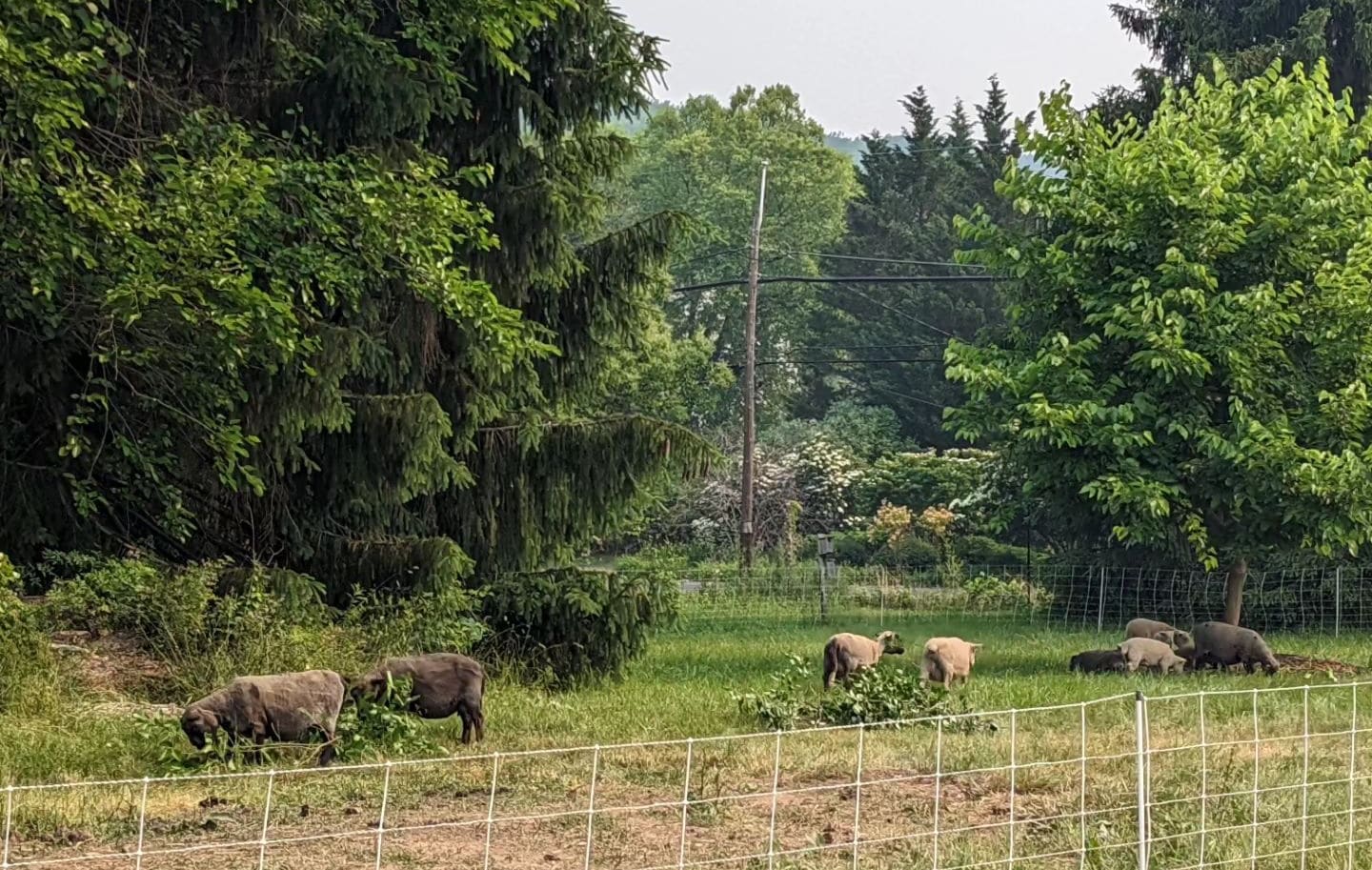
What are are some other ways you implement permaculture into your farming practices?
Water management is another big one you don’t see much outside of permaculture. It’s a huge factor, and we pay a lot of attention to contour and drainage. In somewhat arid areas, water is a big limiting factor, and you need strategies to retain, store and direct more water. On the other hand, where we are, it’s getting wetter with climate change, we’re seeing it in real time. So, sometimes you get a little bit of a drought, and other times there’s so much water and rain events that causing flooding. If you don’t have that water going somewhere useful, it can be a huge negative impact on your farm, and you can end up with all these swampy areas or erosion, which is really common for farms with sloped areas. Organic farms almost always have cover crops to help deal with it, but annuals make it really tricky. When I’m designing a system, water management is one of the first things I look at. I ask: where’s the slope, where’s the water moving? We use the shape to direct water, or use a few key interventions, like putting in terraces. Some of these choices might require renting equipment in the early stages of the farm, but once they’re set up they last for a really long time and help solve a lot of problems.
Is permaculture a workable practice for large farms? Or just smaller farms like yours?
The principles are relevant no matter the scale. Integrate rather than separate: that applies when you have a tenth of an acre or hundreds or thousands of acres. If you have just a couple crops, there can be a lot more potential problems. But, on a farm, you have to find the balance with the economy of scale. If you want to sell a crop, you can’t have a thousand crops planted in a small area. For example, if I was in a really rural place, I would definitely want to have a few main crops with some economy of scale. If I had 100 acres, and wanted to grow hazelnuts, I’d plant most of the land with hazelnut trees, but make sure there were enough other things to diversify. That diversity is especially good for climate change because when you get thrown a curve ball with the climate, some crops aren’t going to thrive, but others will do great. So, if you’re only growing peaches all you need is one late frost and that’s your whole income gone for the year.
We want to show what’s possible, and have systems that work really well. We’re getting more productive every year and making more money from the farm every year, especially as our perennial crops are performing. We have over 10 different kinds of berries, about 10 different fruit trees, maybe 4 or 5 different types of nuts. There’s also the ecological side, too. We have this thriving ecosystem with birds, frogs, just so much wildlife. It’s really cool to see that transformation from when we started.
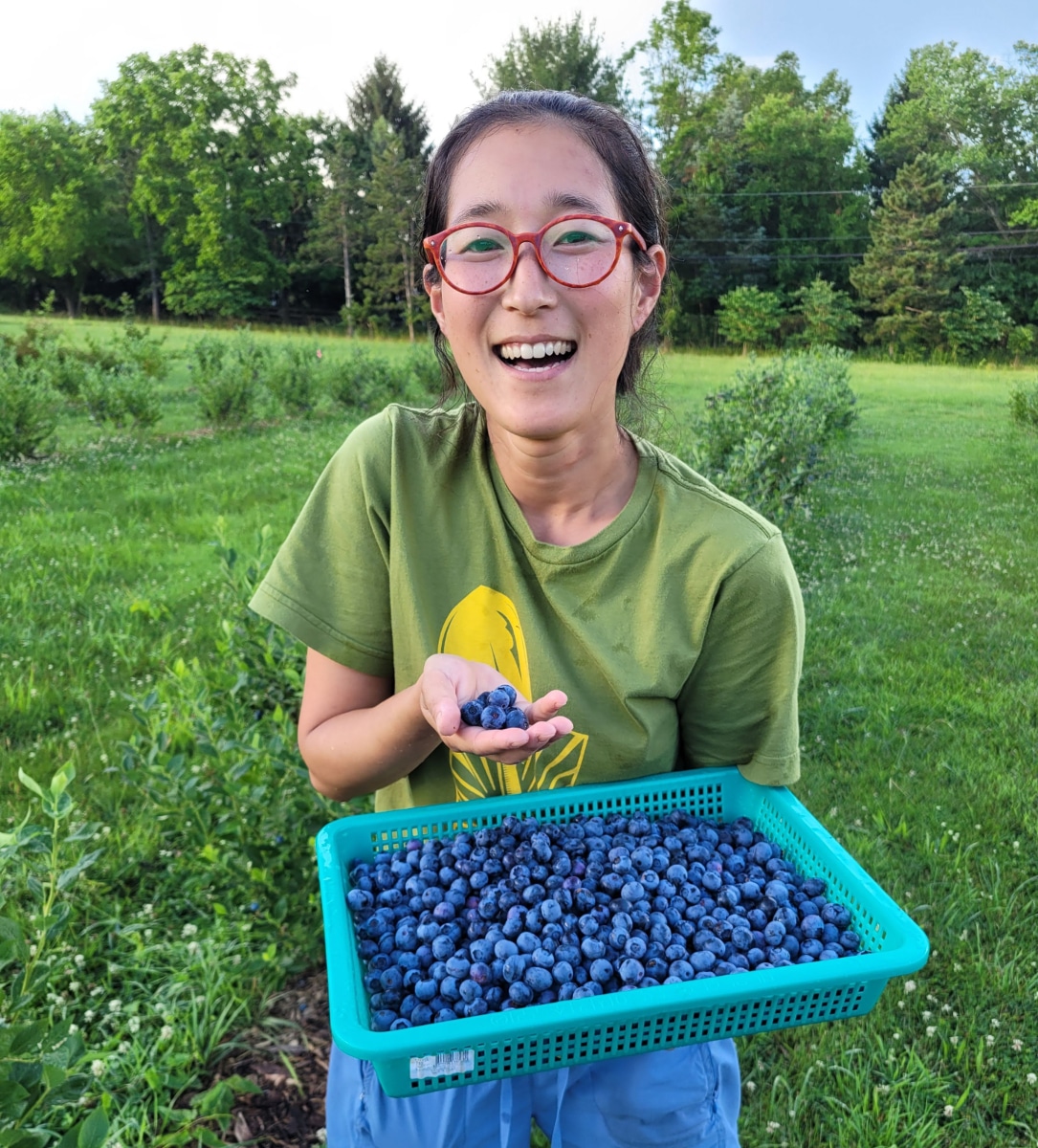
Can people practice permaculture at home?
Actually, a lot of people who practice permaculture are in urban or suburban residential settings. If you have even a tenth of an acre, permaculture is a really useful tool to learn how to design it well and make the most of it, like planting a yard with native and edible plants all mixed together, and creating a little thriving ecosystem.
Part of my job here is teaching permaculture design courses. Especially because I grew up in the suburbs, I want to show people how to grow things in their yards without spraying them, which they really shouldn’t be doing. We can only grow so much food on 10 acres, but if we can show 100 different people a year that a certain type of berry or fruit tree is able to grow in their own back yards, this could have a much bigger ripple effect. That’s really where we need to grow more food, in back yards and lawns, where so much space is going to waste. It’s my mission to turn those spaces into functional landscaping that can give you something in return.
How do you commit to using no sprays when we’re in such a warm, humid area with so much pest pressure?
There are always challenges with pests and diseases, no matter what you grow. If you’re going to be doing no-spray like we are, those challenges are even more difficult. But it also makes the lifestyle much better, because you have a lot less inputs.
But the biggest thing is that you really have to research and understand what’s going to thrive, and not be stubborn about it. Through research I knew apples weren’t great for no-spray, because they get a lot of disease issues and pest problems. We planted some disease resistance apples, more for fun than for crops, but it would be foolish of us to expect to get great quality apples with no spray. On the other hand, things like paw paws are one of our biggest crops. They’re a native fruit, and not that many people grow them because they spoil and bruise very easily. But, they’re basically pest and disease-free, and they grow great here. Plus, being a native plant, they have all these benefits for wildlife, like there are butterflies that only come to paw paw trees. Persimmons are another one. We’re kind of at the northern limit for where they can grow, and we’re one of the only farms around here growing them. We’re pushing some climate boundaries, and that kind of works in our favor with climate change. A few decades ago, people wouldn’t have had much success growing Asian persimmons because the temperatures were lower in winter time.
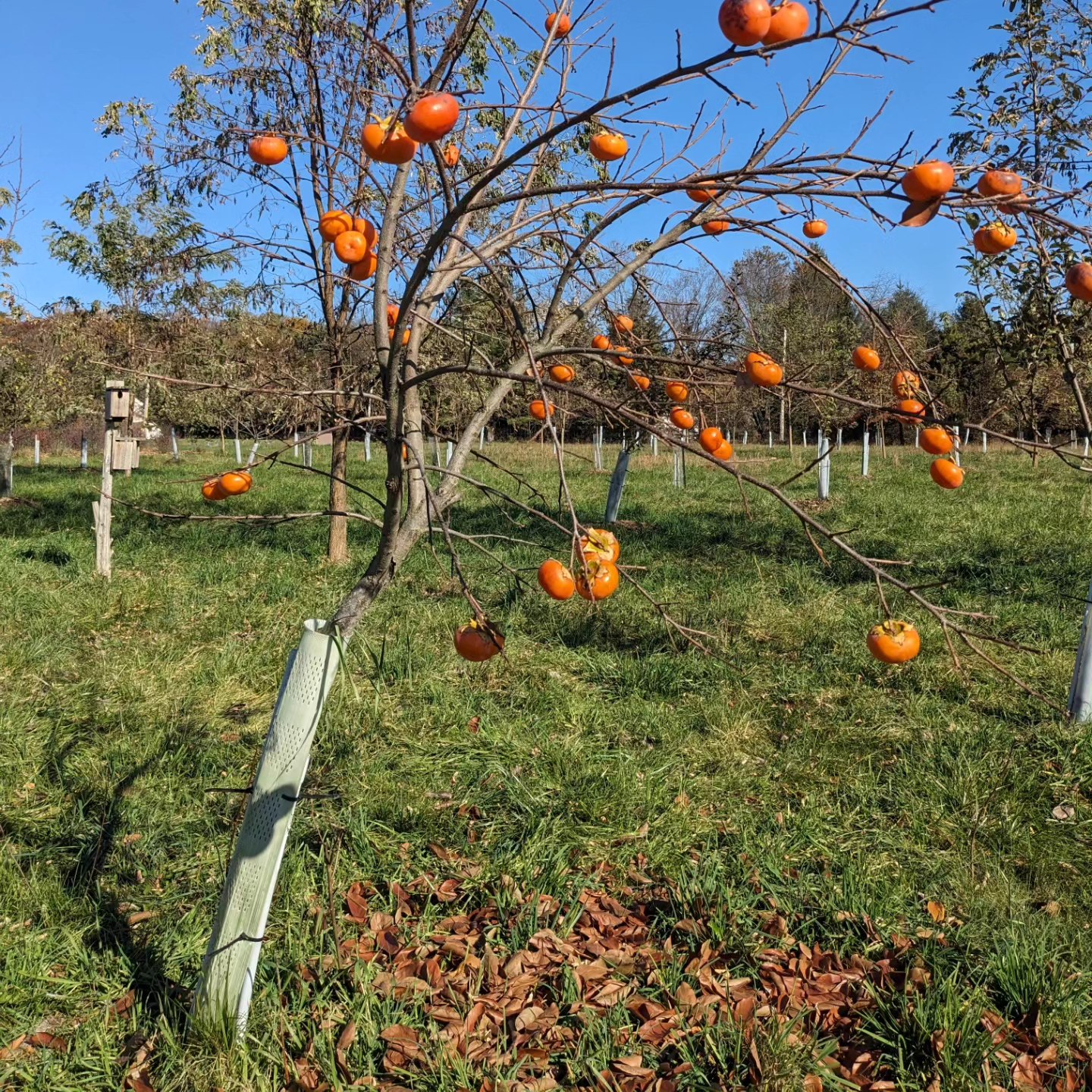
A persimmon tree at Hundred Fruit Farm
How do you think about the future of your farm?
For one thing, we try to design the systems so that things get easier over time for us, and the work lessens. I know I’m not going to be young forever. You start to have back issues and stuff in the farming world. Especially growing vegetables, it’s really tough to keep doing that for decades. With perennials, we’re doing the hard work of establishing things when we’re young and can handle it, and when we’re older, we just have to maintain these systems. We won’t have to plant or plow, more stuff like pruning, mulching and harvesting.
We don’t have kids, but if you do, permaculture is an easier sell, having a farm that’s more interesting and diverse. A lot of conventional farms and larger farms where they’re just growing corn and soy, it’s not that interesting for the next generation. It seems a little stale and you don’t make much money. I mean no one makes a lot of money no matter what kind farming you do, so there has to be something else to entice the younger folks.
Do you vend at any markets, or is it all direct-to-consumer?
We mostly sell directly on our farm! People can join our Buyer’s Club and then come here and shop in our market; we do a lot of U-pick for our club members, too. Our Buyer’s Club is kind of like a CSA, but people can choose what they get. We have a nursery on site, too, so if someone tastes something they like, they can buy a plant or bush for their yard. We raise sheep on the farm, and people love coming to see the babies with their kids. Agritourism isn’t really what we’re doing, but there is an element of that, because what we’re doing is unique and entices people to come here. So we don’t have to come out and do the markets, which makes things so much easier.
When you have a very small farm, it’s nice to keep it member-based, so that you know them and they know you, and they’re often more respectful of the farm. In the early years we kept it purposefully small, and in the last year we doubled membership, because we finally had more crops. We should be able to keep growing every year as we have more things maturing. But so far, we’ve been fine with it being on the small side!
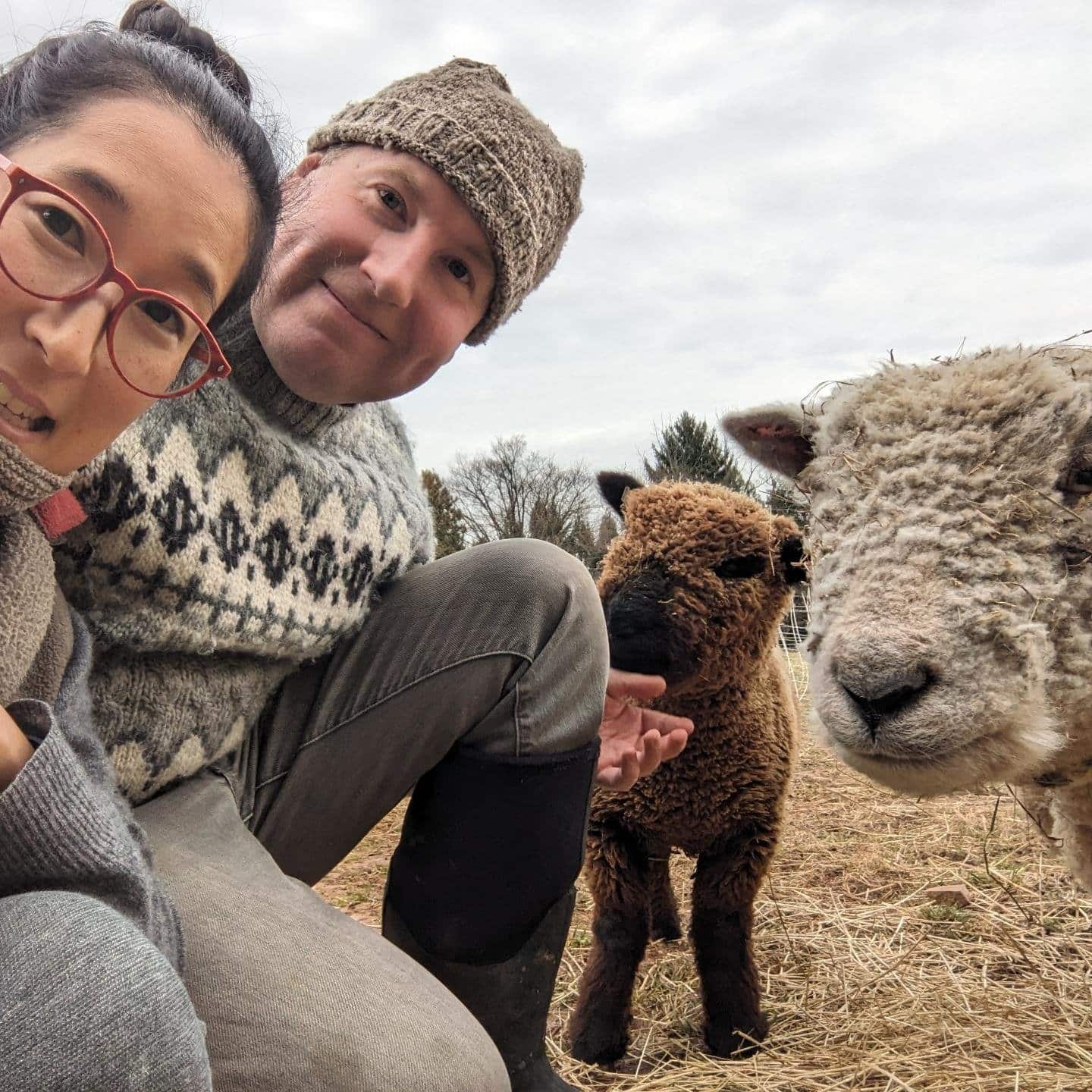
For more info on Hundred Fruit Farm, including how to join its Buyers Club, visit its website. For scenes of life on the farm (and lots of adorable lamb photos) follow along on Instagram and Facebook.
- Photos : Hundred Fruit Farm
